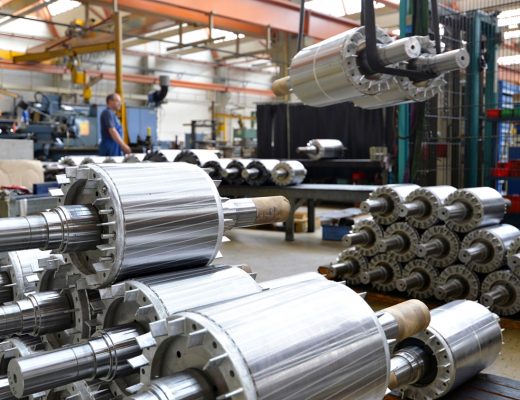Most of us are looking for ways to reduce our carbon footprint and make more eco-friendly choices. Transitioning to a green energy lifestyle is easier than you think, and it starts with simple steps that you can incorporate into your daily routine. By making small changes in your home and habits, you can contribute to a more sustainable future for the planet. In this guide, we will walk you through the process of transitioning to green energy, step by step.
Understanding Your Current Energy Usage
To transition to a green energy lifestyle, the first step is to understand your current energy usage. By conducting an energy audit, you can identify where you are using the most energy and where you can make changes to reduce your overall consumption.
How to Conduct an Energy Audit
One way to conduct an energy audit is to start by assessing your utility bills and looking at your energy consumption patterns over the past year. You can also use online tools or apps to track your energy usage on a daily or weekly basis. Additionally, you can hire a professional energy auditor to evaluate your home and provide recommendations for improving energy efficiency.
Factors to Consider When Assessing Your Energy Consumption
- The age and condition of your appliances and electronics
- The insulation and sealing of your home
- Your heating and cooling habits
Consumption
One key factor to consider when assessing your energy consumption is the age and condition of your appliances and electronics. Older appliances and electronics tend to be less energy efficient, leading to higher energy usage. By upgrading to energy-efficient models, you can reduce your overall consumption and lower your utility bills.
- Your heating and cooling habits
- The energy efficiency of your lighting
- The number of people in your household
Conduct
Conducting an energy audit and considering these factors will give you a clear understanding of where your energy is being used and where you can make changes to reduce your carbon footprint. By knowing your current energy usage, you can take the necessary steps to transition to a greener energy lifestyle.
Setting Goals for Your Green Energy Transition
Some people may find it overwhelming to transition to a green energy lifestyle, but setting clear goals can help you stay focused and motivated throughout the process. By establishing achievable objectives, you can track your progress and celebrate your successes along the way.
Tips for Setting Realistic and Achievable Objectives
- Start by assessing your current energy consumption and identifying areas where you can make improvements.
- Set specific, measurable, and time-bound goals to make your transition more manageable.
- Break down larger goals into smaller tasks to avoid feeling overwhelmed and to keep yourself motivated.
Any setbacks or challenges you encounter are opportunities to learn and adjust your goals accordingly.
How to Prioritize Your Energy-Reducing Efforts
To prioritize your energy-reducing efforts, begin by identifying which areas of your lifestyle have the biggest environmental impact. This could include reducing energy consumption in your home, transportation habits, or even dietary choices. By focusing on the areas where you can make the most significant changes, you can maximize your efforts and see results more quickly.
Prioritize actions that align with your values and have a meaningful impact on reducing your carbon footprint. By tackling one area at a time, you can gradually make sustainable changes that will add up to a major shift towards a greener lifestyle.
Simple Swaps for a Greener Lifestyle
How to Replace Traditional Lighting with Energy-Efficient Options
Little changes can make a big impact on your journey to a greener lifestyle. One simple swap you can make is replacing traditional incandescent light bulbs with energy-efficient options such as LED or CFL bulbs. LED bulbs last longer and use significantly less energy than traditional bulbs, helping you reduce your carbon footprint while saving money on your electricity bill.
Tips for Upgrading to Eco-Friendly Appliances
Another easy way to transition to a green energy lifestyle is by upgrading to eco-friendly appliances. Simple upgrades like choosing Energy Star rated appliances can greatly reduce your household energy consumption. When shopping for new appliances, look for models that are energy-efficient and have features like water-saving options for dishwashers and washing machines.
- Look for appliances with the Energy Star label.
- Consider the size and capacity of the appliance to ensure it meets your needs without wasting energy.
With these simple swaps and upgrades, you can make your household more energy-efficient and environmentally friendly. After all, every small change you make adds up to a significant positive impact on the planet.
Making Bigger Changes for a Greater Impact
Not only can you make a difference by making small changes in your daily routine, but you can also have a significant impact by making bigger changes in your energy consumption habits. By investing in renewable energy sources for your home and considering going off the grid, you can take meaningful steps towards living a greener, more sustainable lifestyle.
How to Invest in Renewable Energy Sources for Your Home
Sources of renewable energy, such as solar panels or wind turbines, can be great investments for your home. While the initial cost may seem daunting, the long-term benefits in terms of energy savings and environmental impact make it a wise choice. Research different options available in your area, consider the space you have available for installation, and consult with experts to determine the best renewable energy source for your home.
Factors to Consider When Going Off the Grid
Changes in lifestyle and infrastructure are necessary when considering going off the grid. Factors such as energy storage, water supply, waste management, and food production need to be carefully planned. Assume that you will need to become more self-reliant in these areas and prepare accordingly. It’s important to assess your current energy consumption, set realistic goals for reducing it, and make the necessary adjustments to live comfortably off the grid.
- Assume that you will need to invest in robust storage solutions for energy generated from renewable sources.
- Assume that you will need to implement sustainable practices for water conservation and ensure a reliable supply of clean water.
Final Words
With these considerations in mind, you are well equipped to transition to a green energy lifestyle. By starting with small, simple steps such as reducing energy consumption, utilizing renewable energy sources, and making conscious choices when it comes to transportation and consumption habits, you can make a significant impact on the environment. Your actions today can help create a more sustainable future for generations to come.

